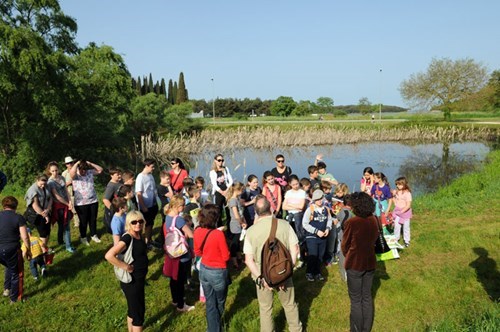

When the road from the direction of Funtana approaches Vrsar, after passing the Dušan Džamonja’s Sculpture Park on the right (western) side, a pond comes into view, called Fabjan by the locals today. It is an ancient pond mentioned as early as in the Middle Ages as a part of the Vrsar coast located in "Fiabam". In the Middle Ages and Modern Period, well-known quaysides and fishing areas of the Vrsar County were located here. It was also an area which bishops of Poreč often leased to individuals for income.
This ancient pond was once twice or thrice its current size, but when the road was built, it was reduced, with openings for drainage into the sea.

The pond was surely used as a water supply basin, but not so much as a source of potable water since the people of Vrsar had had water cisterns for a long time, and there were plentiful sources of potable water near Valkanela which never ran dry. However, the pond never ran dry either, not even during severe droughts. It had a fairly large surface area, for which it has always been distinct. Due to its distinct features, the nearby Church of Saint Peter was called of Flaban, after the pond.
The pond is the starting point for an old path toward Fuškulin, which first climbed toward the Church of St Andrew. On the part from St Andrew’s, the path is a macadam road, but traces of the old path can still be clearly discerned thanks to the preserved curbs and side slopes. The stones were laid into the road in a vertical position – the side with the smallest surface area pointing upwards – and compacted into the road so that the side with the largest surface area was perpendicular to the road surface. Due to the depth of stone laying, such a construction method proved to be extremely resilient to mechanical, artificial and natural stresses, particularly to undermining by water, ice or various liquids. Furthermore, the stones that were laid into the road using the side slope method do not crack in contact with the stone or wooden wheels of loaded wagons, which is a significant advantage of that road building method. Curbs (elongated stones) flanked the road. They are only partially visible because they have been buried under earth from the side in many places, and partially ruined. With the restoration of the Church of St Andrew, Vrsar received another valuable locality in harmony with nature that can serve as a rest stop for hikers. On the part of the road between the Flaban pond to St Andrew’s, there are crucifixes marking the stations of the Way of the Cross, where many believers from Vrsar and the surrounding area gather before Easter.